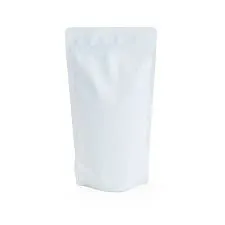Comparing Mylar and Polypropylene for Durability and Performance in Various Applications
Mylar vs. Polypropylene A Comparative Analysis
In the world of materials, especially when it comes to packaging, insulation, and various industrial uses, Mylar and polypropylene are two widely referenced options. Each material has its unique properties, advantages, and applications. This article compares Mylar and polypropylene, shedding light on their features, uses, and ideal applications.
What is Mylar?
Mylar is a brand name for a type of polyester film that is made from polyethylene terephthalate (PET). It is known for its remarkable strength, durability, and versatility. Mylar films are characterized by their excellent barrier properties, making them resistant to moisture, gases, and other environmental factors. This quality makes Mylar an attractive choice for applications requiring high-quality packaging and insulation.
Mylar is also famous for its reflective properties. The material can be coated with a metallic layer, enhancing its ability to reflect light and heat. This property is particularly useful in applications such as thermal blankets, emergency space blankets, and insulation for building materials.
What is Polypropylene?
Polypropylene, on the other hand, is a thermoplastic polymer that is widely used for packaging, textiles, automotive parts, and various consumer products. It is known for its chemical resistance, lightweight nature, and durability. Polypropylene can be produced in numerous forms, including films, fibers, and molded products, making it a versatile choice across many industries.
Polypropylene has a relatively high melting point, which makes it suitable for applications involving higher temperatures. It is also recyclable, which is an increasingly important factor in today’s environmentally conscious marketplace. Polypropylene is resistant to moisture and chemicals but is not as effective as Mylar in providing a complete barrier against gases.
Comparative Analysis Properties and Advantages
mylar vs polypropylene

1. Barrier Properties Mylar excels in barrier properties compared to polypropylene, particularly when it comes to preventing moisture and gases from permeating the material. This makes Mylar ideal for food packaging, pharmaceuticals, and electronics that require protection from environmental factors.
2. Temperature Resistance Polypropylene has a higher melting point, making it suitable for applications that require thermal stability. This makes it a better choice for products that will undergo heat treatment or exposure to high temperatures.
3. Durability and Strength Both materials are strong, but Mylar tends to have a higher tensile strength. Its durability makes it useful in harsh conditions, while polypropylene’s lightweight nature provides strength without adding bulk.
4. Reflective Properties Mylar's ability to reflect light and heat is a standout feature not found in polypropylene. This property is advantageous in applications such as insulation and space blankets.
5. Environmental Impact Polypropylene is considered more environmentally friendly due to its recyclability. In contrast, Mylar, while durable, is less often recycled and can contribute to plastic waste if not disposed of correctly.
Applications
Mylar is utilized in industries such as aerospace, food packaging, and electronics. Its insulative and reflective capabilities make it perfect for thermal insulation in buildings and emergency blankets. Conversely, polypropylene is commonly found in packaging, textiles (e.g., non-woven fabrics), automotive applications, and various consumer goods.
Conclusion
In summary, both Mylar and polypropylene have their distinct advantages and ideal applications. Mylar's superior barrier properties and reflective capabilities make it excellent for high-tech and protective applications, while polypropylene's versatility, higher temperature resistance, and recyclability make it suitable for a wide range of everyday products. When choosing between the two, it is essential to consider the specific requirements of the application at hand, as each material serves unique purposes in various industries.













